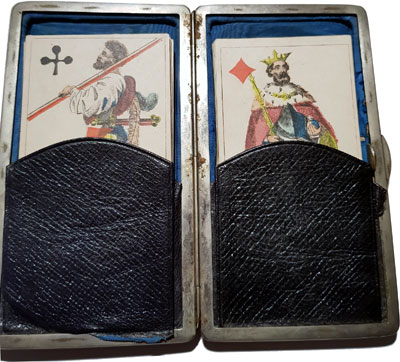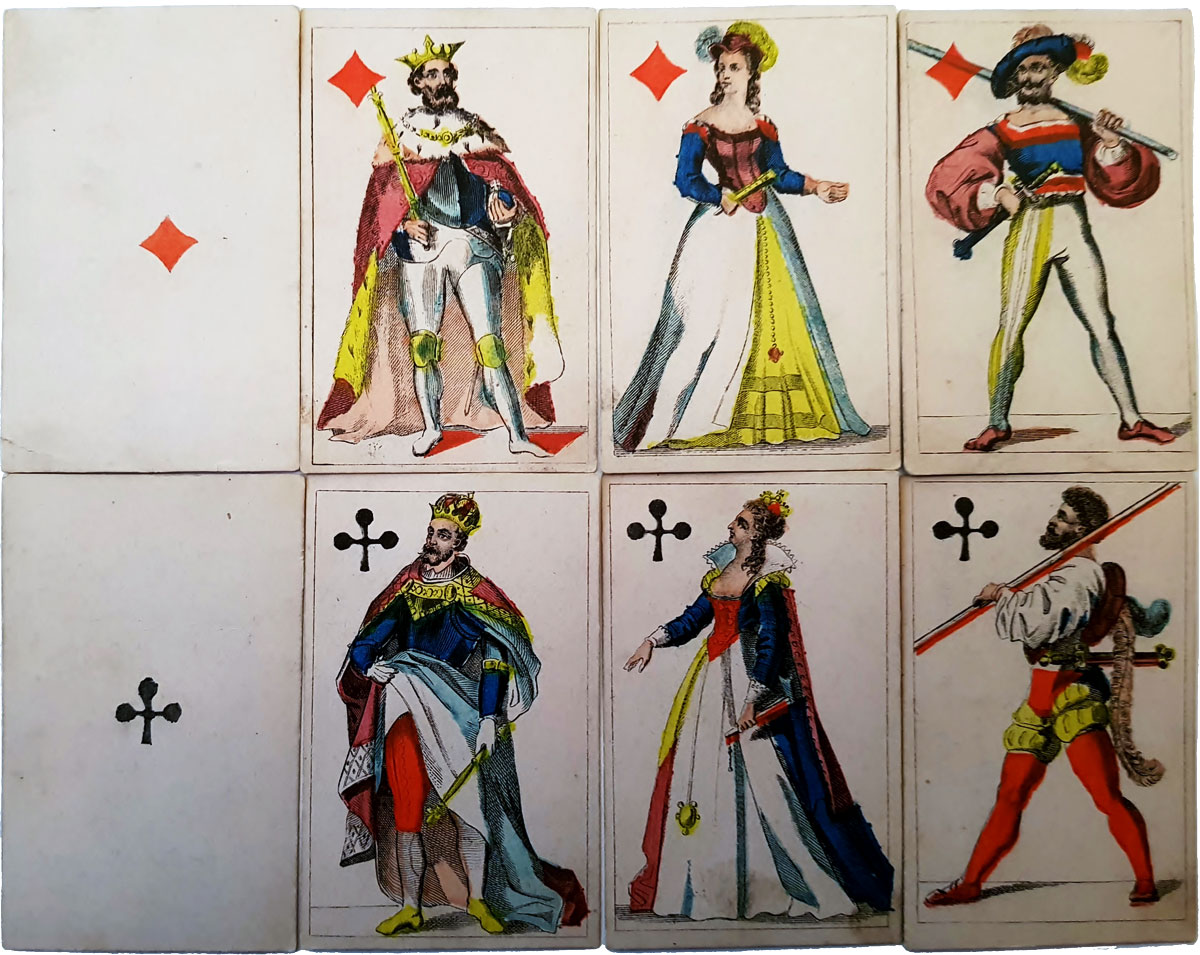Amorous Translucent Playing Cards
Amorous Translucent Playing Cards, French, c.1850.
During the 18th and 19th centuries romantic “Love Motto” or proverbial packs, depicting amorous couples with rhyming couplets or fortunes printed beneath, were a popular entertainment [see Georgian Fortune-Telling; Baraja del Amor]. However, during the 19th century in France translucent playing cards with hidden, but more explicit, amorous scenes became the rage. The hidden image becomes visible when a card is held up to the light.
The cards are enclosed in a case which clips shut (click to zoom) →
The Court Cards
Royal figures - Kings, Queens and Jacks - are depicted in innocent poses. There is no information regarding the actual manufacturers or when exactly they were made, but they tend to be from around the mid-19th century.
The Hidden Images
When held up to a light hidden images of an amorous nature can be seen. In the example shown here one card has been scorched by someone viewing too closely in front of a candle. Unfortunately the five of clubs is missing and the six of diamonds has a small candle burn at the top (shown to right).
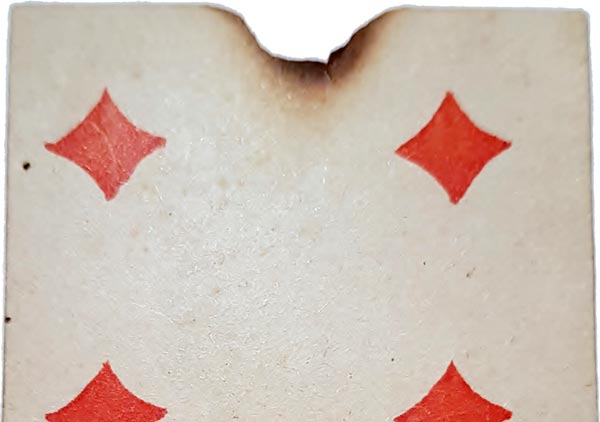
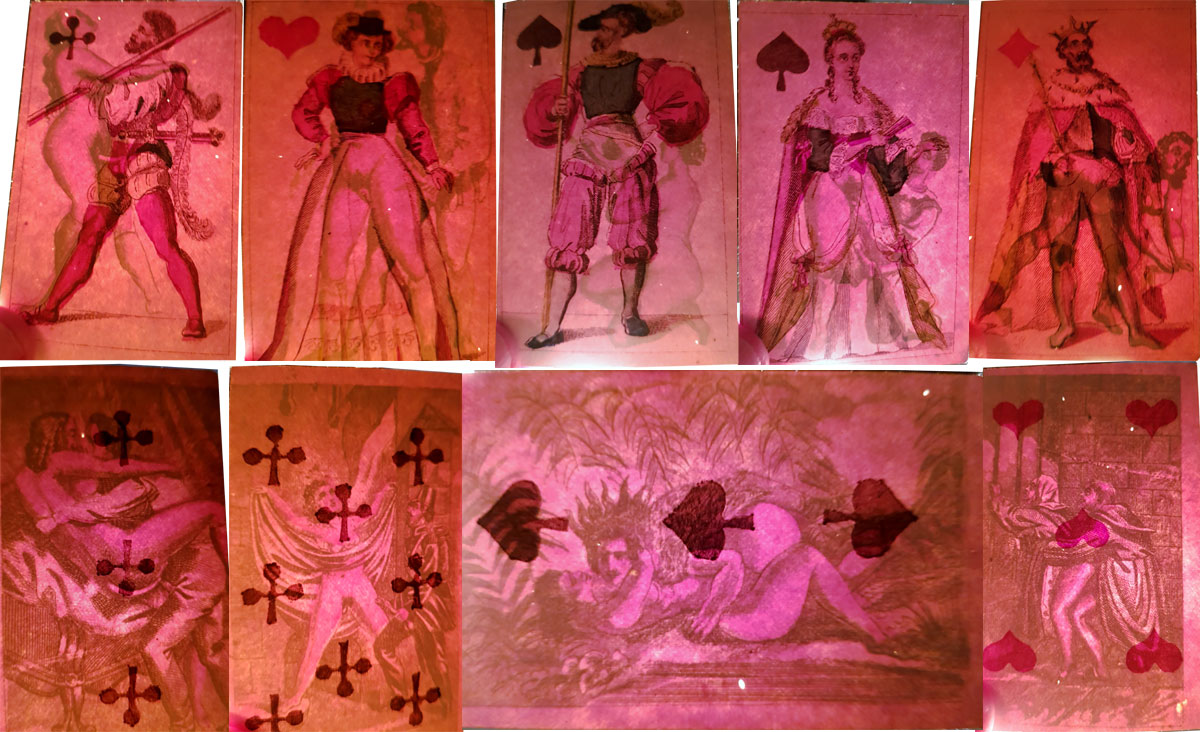
Above: translucent pack of French 1850 cards. Stencil coloured. The size of the cards is 87mm by 55mm. The reverse is blank. All images courtesy Alex Lamont.
The Romans also enjoyed pornographic imagery...
There is, of course, nothing new in depictions of erotic incidents, real or imaginary, sometimes involving prostitutes or even animals, and these have been discovered on domestic items such as lamps, and on mural paintings in Roman dwellings, for example , as well as in Greek and Roman sculpture and literature.
Above: erotic scene from Roman mural painting. Image from Museo Nacional de Arte Romano, Mérida.
By Simon Wintle
Spain • Member since February 01, 1996 • Contact
I am the founder of The World of Playing Cards (est. 1996), a website dedicated to the history, artistry and cultural significance of playing cards and tarot. Over the years I have researched various areas of the subject, acquired and traded collections and contributed as a committee member of the IPCS and graphics editor of The Playing-Card journal. Having lived in Chile, England, Wales, and now Spain, these experiences have shaped my work and passion for playing cards. Amongst my achievements is producing a limited-edition replica of a 17th-century English pack using woodblocks and stencils—a labour of love. Today, the World of Playing Cards is a global collaborative project, with my son Adam serving as the technical driving force behind its development. His innovative efforts have helped shape the site into the thriving hub it is today. You are warmly invited to become a contributor and share your enthusiasm.

Related Articles
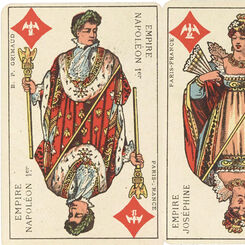
Cartes politiques : Jeu d'actualité
Political playing cards published by Grimaud et Chartier, Paris, 1872.
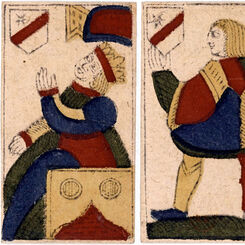
Swiss playing cards by Iehan Hemau
17th century Swiss-suited playing cards by Iehan Hemau of Épinal.

Dessoris
Spanish-suited cards by Dessoris, Perpignan, which anticipate the French Catalan pattern.

Cartes Catalanes by Fossorier, Amar et Cie
‘Cartes Catalanes’ published by Fossorier, Amar et Cie (Paris)
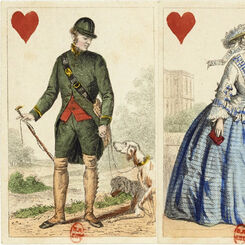
Fashion costume pack by O. Gibert
Elegant fashion costume deck published by O. Gibert, Paris c.1860.
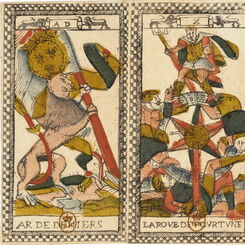
The Parisian Tarot
The “Parisian Tarot”, early 1600s, with imagery and design synthesizing several influences.

Nouvel Eteila ou le petit nécromancien
“Nouvel Eteila ou le petit nécromancien” cartomancy cards from France, late 18th century.
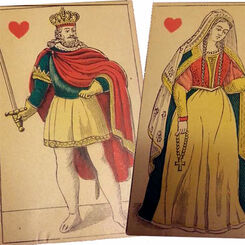
Translucent Playing Cards
Translucent Playing Cards, 19th century French from the Biedermeier period

Translucent Playing Cards
Translucent Playing Cards made by an unknown maker, c.1850
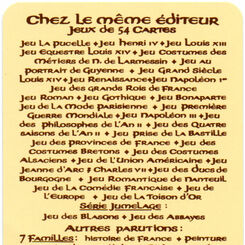
Éditions Dusserre, Paris
Éditions Dusserre, Paris.

Éditions Philibert
Éditions Philibert published an outstanding series of exotic, artistic playing cards in Paris from 1...

Livre du Destin
Livre du Destin or Book of Fate, printed by B.P.Grimaud, Paris, c.1900.

Lequart Aluette
Spanish-suited Aluette pack with 'FABRICANDO IN MADRID' printed on the Two of Swords and the legend ...

Richard Bouvier
The assorted antique playing cards shown below are examples of the French 'Paris' pattern from the s...

Alphonse Arnoult
Finely engraved deck by Alphonse Arnoult (Paris), c.1860. 52 cards.

Boisse English pattern
Boisse English pattern, c.1870 based on designs by De La Rue.

Translucent Erotic Playing Cards, page 2
Translucent Erotic Playing Cards, page 2

Translucent Playing Cards, c.1850
Cards from a translucent pack. Erotic images are concealed in the middle layer of the card and becom...

O. Gibert, Paris c.1840-60
Gibert was a master card-maker whose fashionable playing cards were of a very high standard.
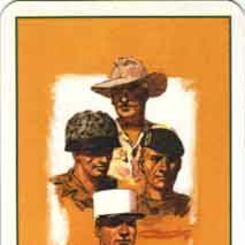
Polaires - Foreign Legion Playing Cards
A Bridge-style deck featuring Foreign Legion paintings by Maitre Rosenberg.
Most Popular
Our top articles from the past 60 days


